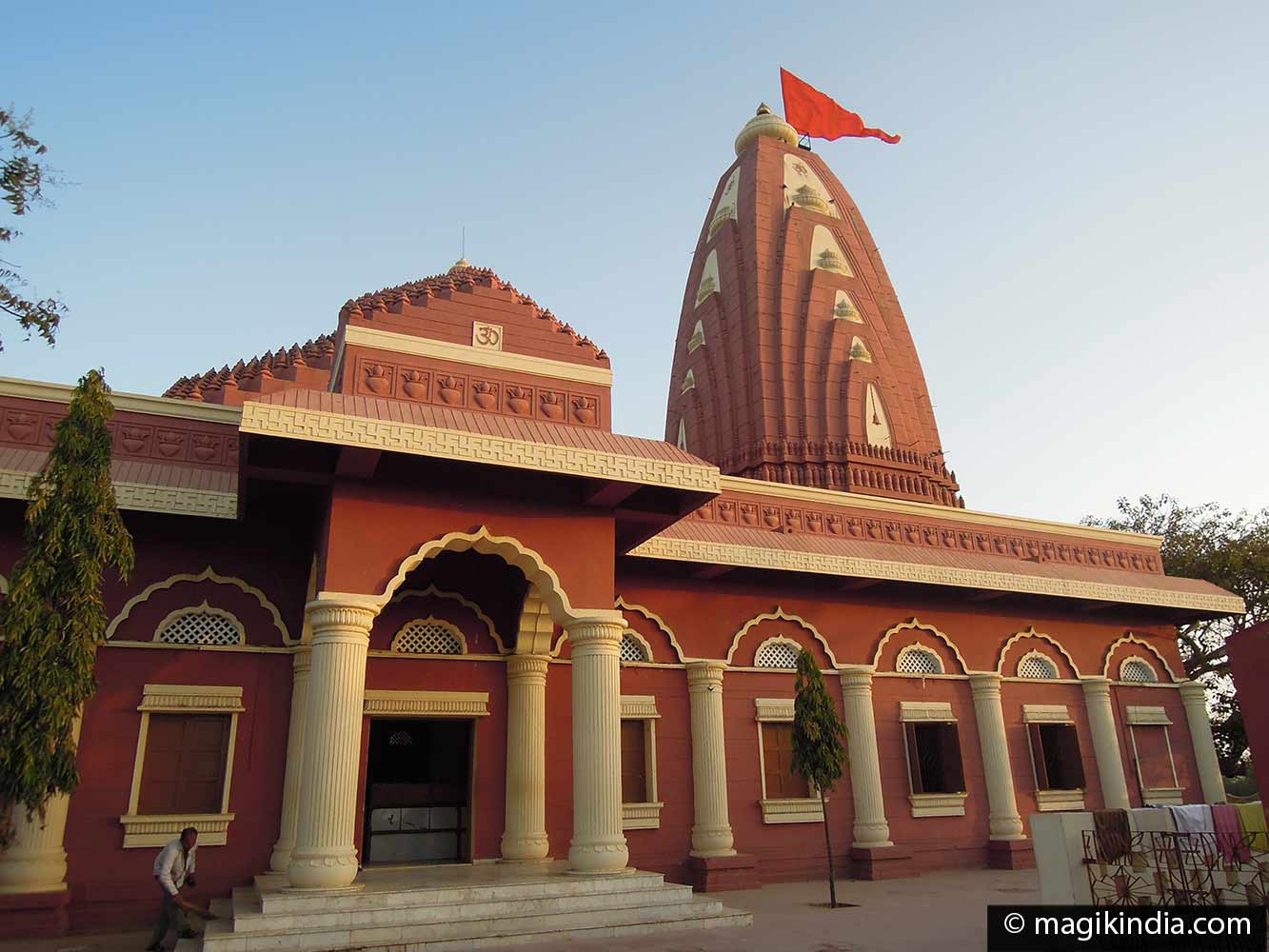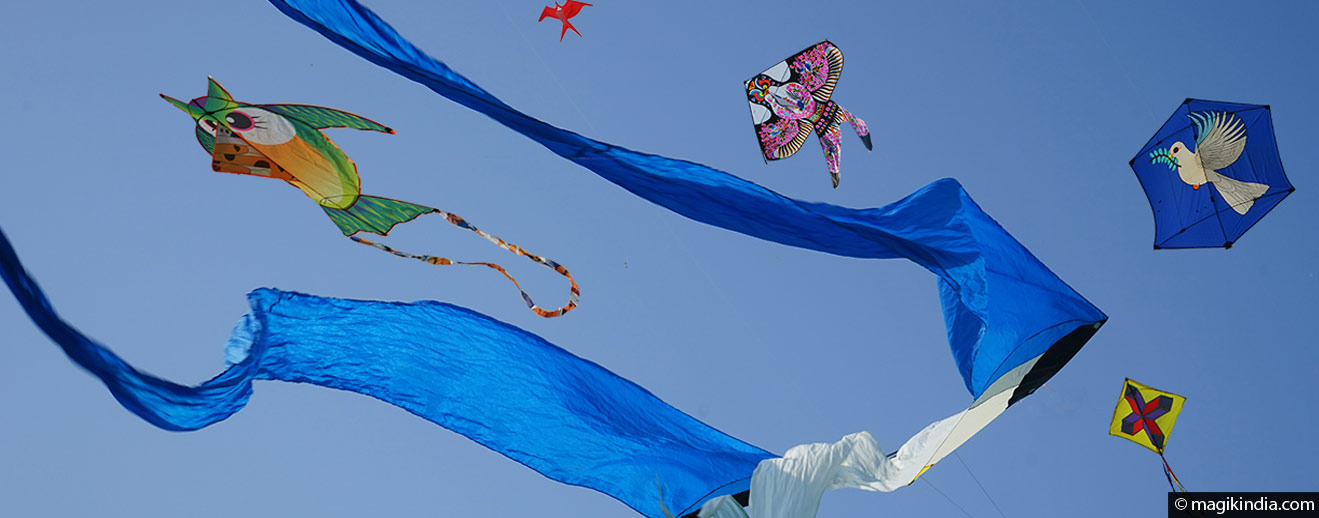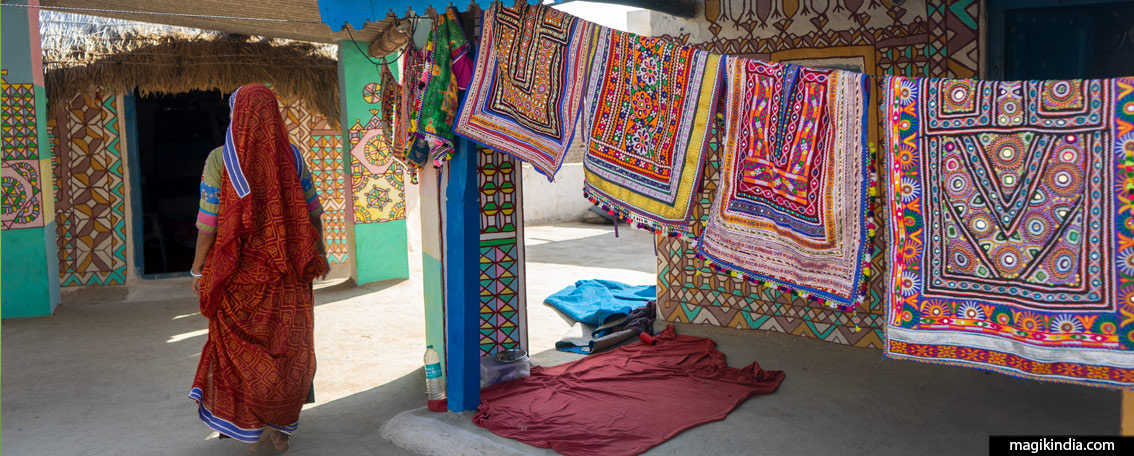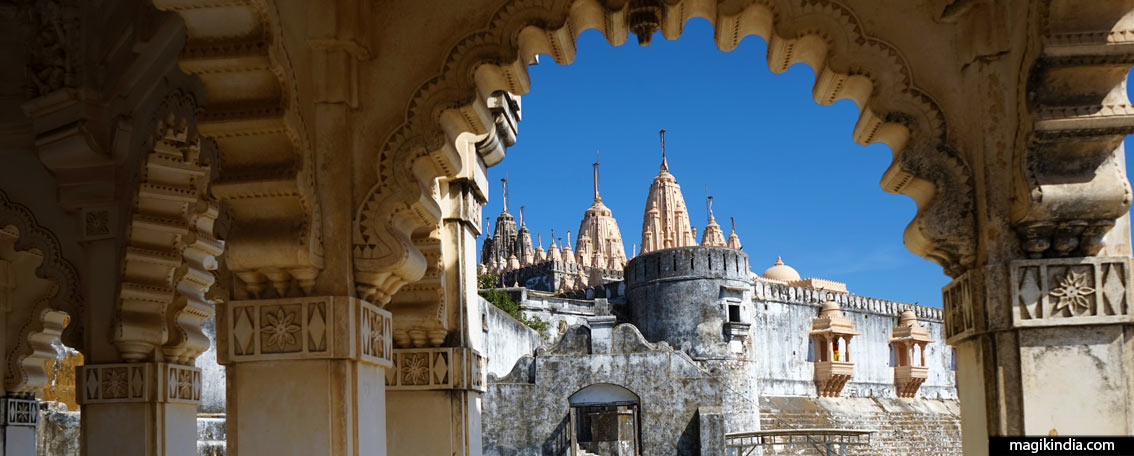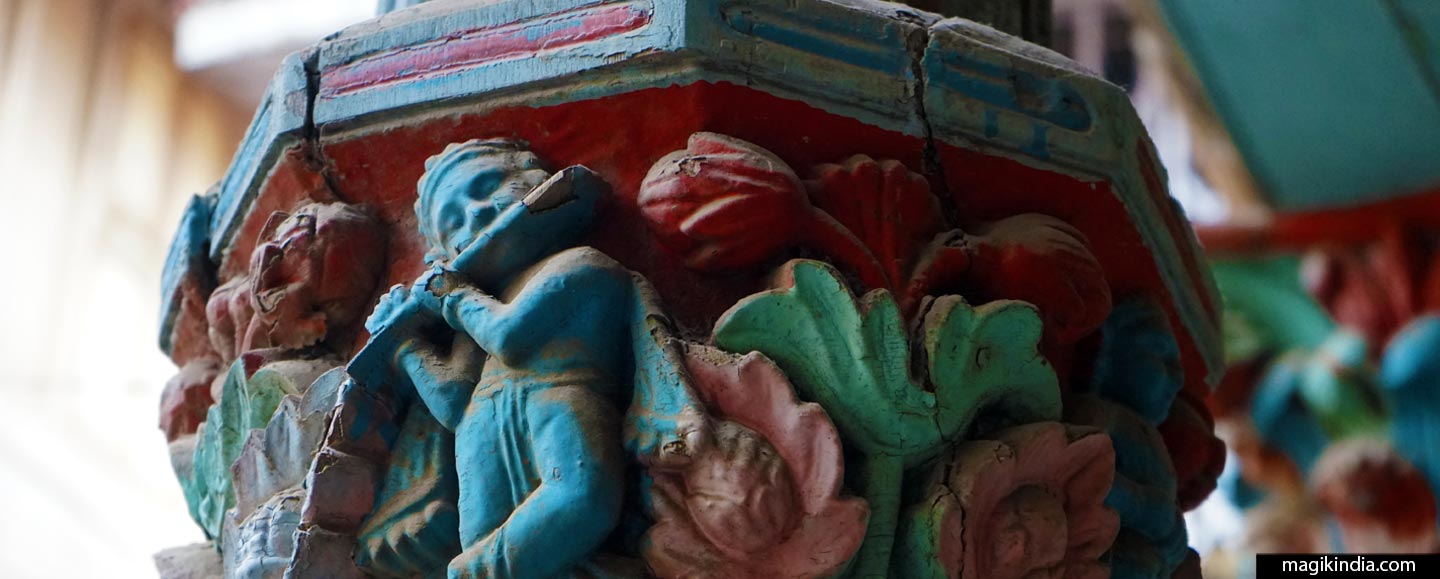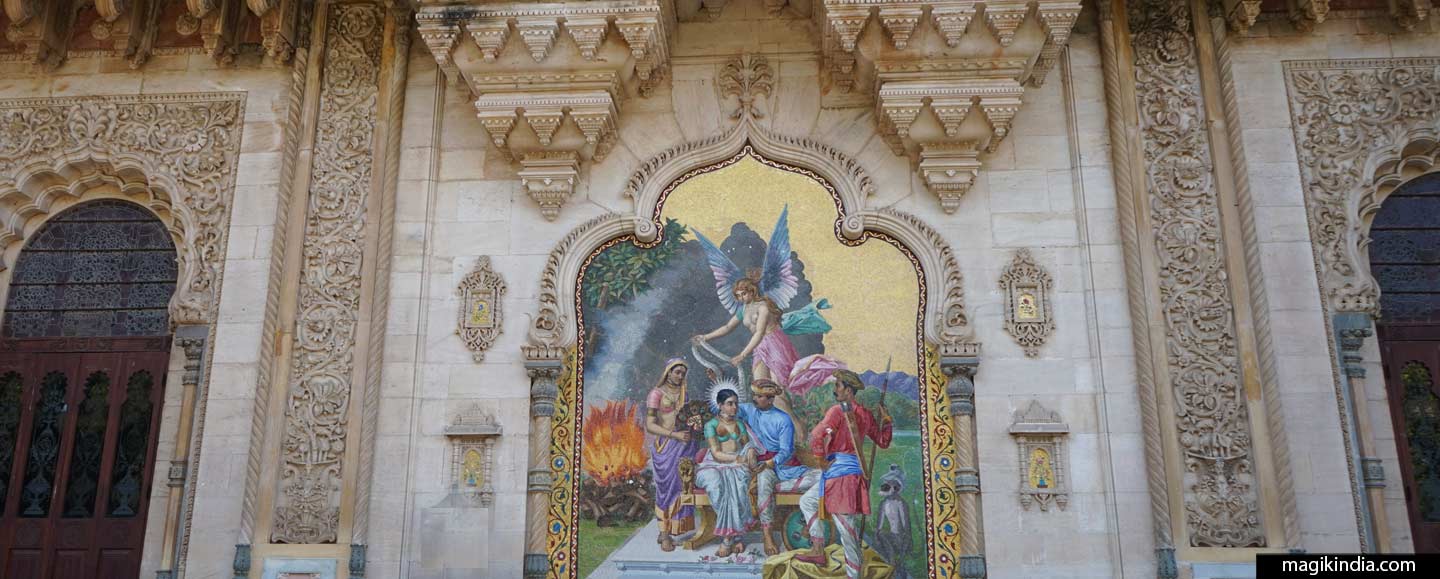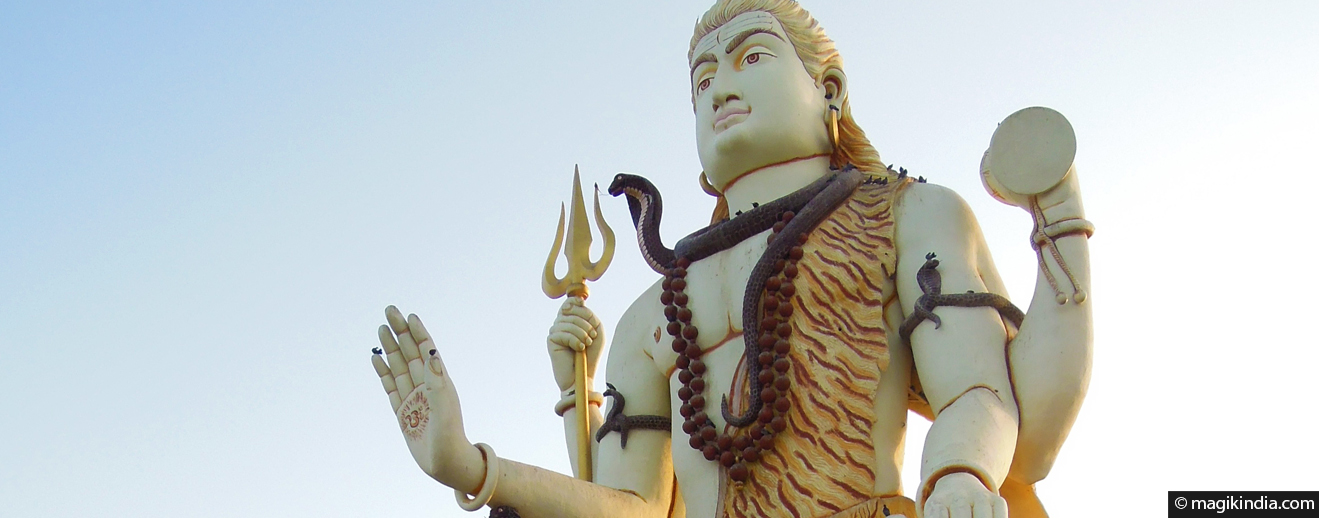
Nageshwar, the Lord of Cobras
Nageshwar Temple, 12 miles to the northeast of the holy town of Dwarka, houses the “lord of cobras”, one of the 12 Jyotir Lingams or “lingams of light”. The temple is way out in the countryside but can be seen from afar, particularly the huge 82-foot Shiva statue that watches over it.
The legend of Nageshwar
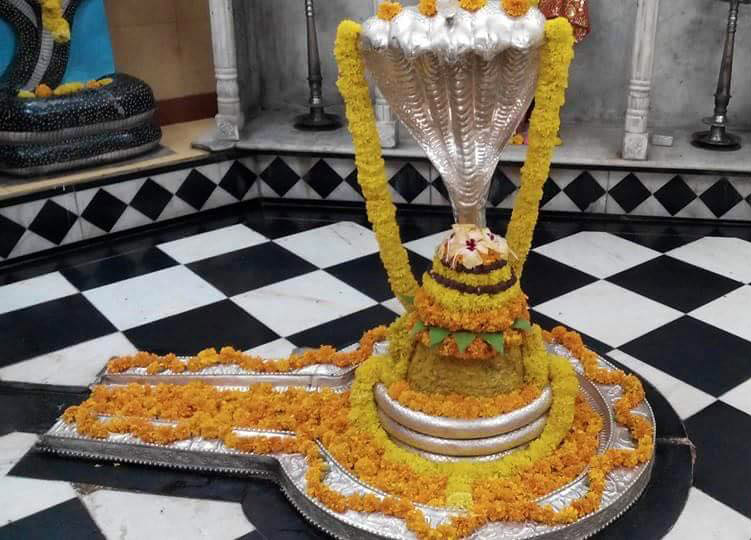
It is said that demons were torturing the population and destroying their houses and temples.
Supriya, a Shiva devotee, resisted the oppression but was imprisoned by Daruka, king of the demons.
Supriya continued to perform pujas (rituals) to Shiva as if nothing had happened, and converted the other prisoners.
He used covered himself in sacred ashes (bhasma), wore necklaces of rudraksha seeds and chanted the mantra “Om Namah Shivaya”.
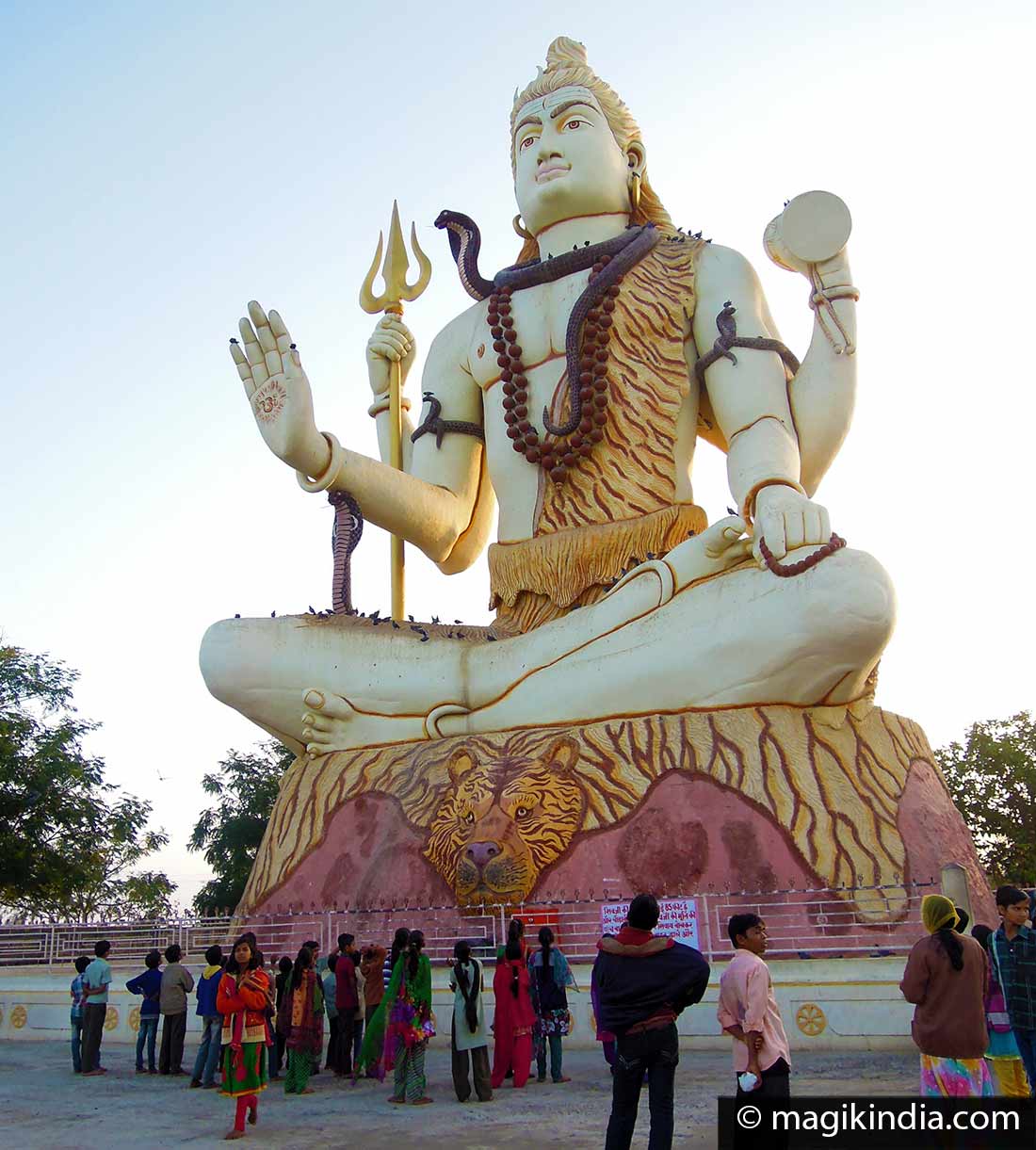
Daruka was angry at all this and gave Supriya a warning. But Supriya persisted, and was condemned to death. He prayed to Shiva to protect him and began to meditate. The other prisoners recited “Shiva, Shiva, Shiva!” in chorus. Suddenly the prison was flooded with light Shiva appeared, garlanded with snakes.
The demons were instantly reduced to ashes. Nageshwara (one of Shiva’s many names) remained in that place like a lingam of light. The place was called Darukavanam and the Jyotir Lingam “Naganath” or “Nageshwara”.
Nageshwar’s Jyotir lingam

Nageshwara is a lingam said to be made of Dwarka Sila or coral stone from the Gomati river in Dwarka.
Dwarka Shila is a sacred stone to Hindus; it is marked with chakras (wheel-like motifs). The number of chakras on a stone determines which god it is dedicated to.
The Puranas (old sacred scriptures) say that anyone who touches a Dwarka Sila obtains spiritual liberation. It is also said that whoever prays to Lord Nageshwar is freed of all mental poisons.
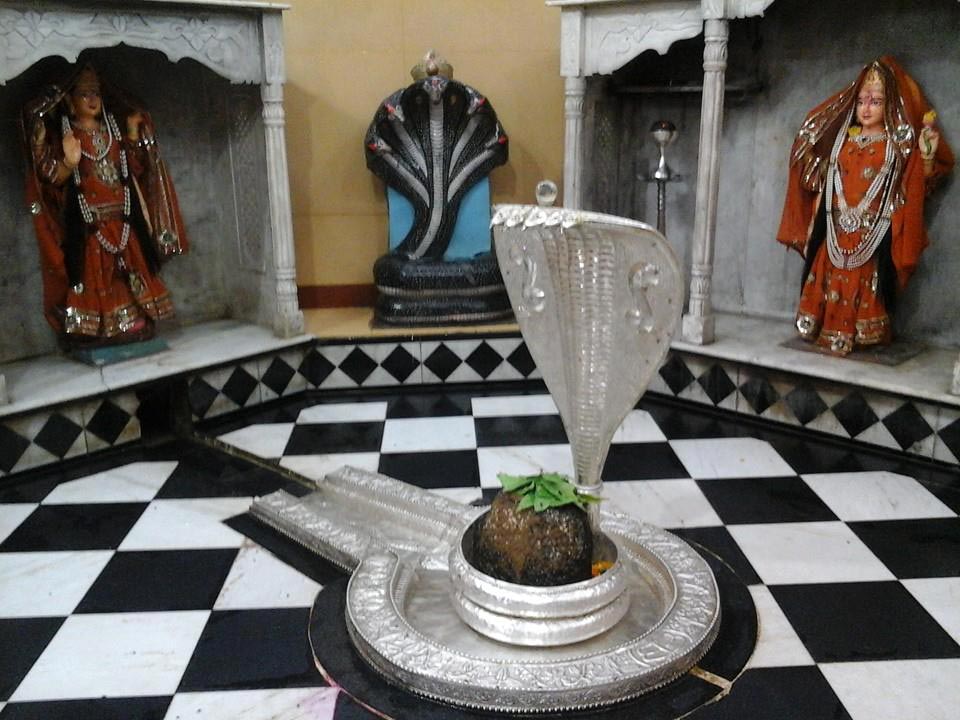
In this temple the lingam faces south and the gomukham faces East, and there is a story that explains why: A Shiva devotee called Naamdev was singing bhajans in front of the lingam one day. The other worshippers asked him to sit to one side so as not to block their view of the lingam. Naamdev asked them to show him a place where Shiva was not present so that he could sit there. The worshippers were angry and dragged him to the south end of the temple. To their astonishment, the lingam moved to face south.
